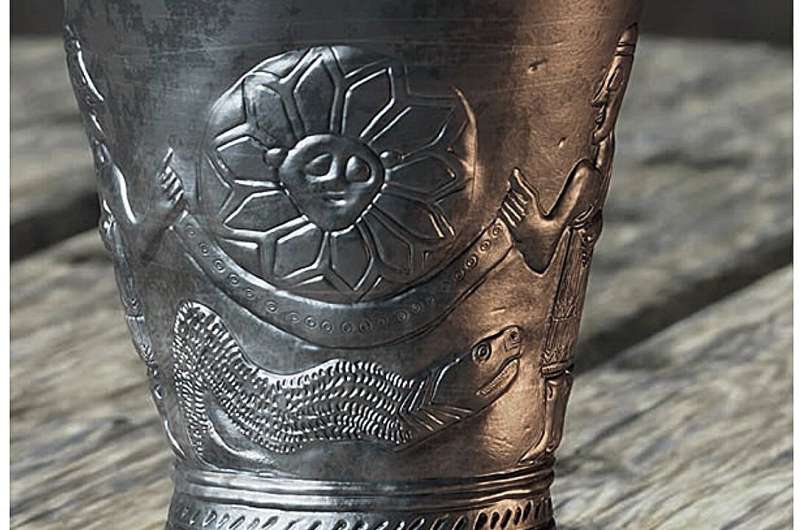
Recent research indicates that the imagery on the ancient ˁAin Samiya goblet—an 8 cm tall silver vessel from the Intermediate Bronze Age (c. 2650–1950 BCE)—may represent a cosmic creation narrative rather than the well-known Babylonian Enuma Elish myth. This study, published in the *Journal of the Ancient Near Eastern Society*, challenges long-held beliefs about the goblet’s significance.
Discovered 55 years ago in a tomb located in the Judean Hills, the goblet features intricate decorations that have puzzled scholars for decades. Initially, researchers believed the scenes illustrated the epic battle between the god Marduk and the chaotic sea goddess Tiamat. However, the new findings suggest a different interpretation, focusing on the peaceful ordering of the cosmos.
New Insights on Ancient Imagery
The ˁAin Samiya goblet is unique as it stands as the only known piece of genuine art from this period in the Levant region. The visible imagery includes a composite creature that is part human and part animal, holding plant-like objects, with a celestial rosette positioned between its legs. The two legs appear to belong to separate bulls, while a large snake looms beside the figure.
The second scene on the goblet portrays two human figures lifting a crescent shape that cradles a sun with a facial depiction, known as en face. This sequence suggests a transformation from chaos to order, with the sun deity emerging stronger and more radiant in the later depiction.
The authors of the study argue that the goblet reflects a narrative about the cosmos’ peaceful organization rather than a violent myth. They point out that while early interpretations linked the imagery to the Enuma Elish, this myth emerged approximately a millennium after the goblet’s creation.
Contextual Comparisons and Cultural Significance
The research team, led by Eberhard Zangger, noted several parallels between the goblet’s imagery and other artistic representations of cosmological creation myths found across the Near East, including regions such as Egypt and Anatolia. They highlighted that the crescent shape is a recurring motif in various Bronze Age cultures, symbolizing celestial journeys.
Additionally, the goblet’s hybrid figures, reminiscent of other cultural artworks, suggest that it may have been crafted by an artist from southern Mesopotamia, likely produced in northern Mesopotamia or northern Syria, where silver was readily available.
Despite the compelling arguments presented in the study, some uncertainties remain about the goblet’s original creator and intent. The condition of the goblet at the time of discovery was not thoroughly documented, and interpretations rely heavily on iconographic comparisons rather than direct textual evidence.
Some scholars remain skeptical about the study’s conclusions. Mark Smith, a Biblical scholar at Princeton Theological Seminary, expressed that while the ties to the Enuma Elish may be inaccurate, it is unclear whether the imagery represents a creation myth at all. He suggested that alternative interpretations, such as connections to the Baal cycle, could be equally valid.
The findings surrounding the ˁAin Samiya goblet not only add depth to our understanding of ancient art but also highlight the complexities of interpreting historical narratives. As archaeologists and scholars continue to explore these ancient artifacts, the conversation surrounding their meanings evolves, reflecting broader cultural and cosmological beliefs of the time.







